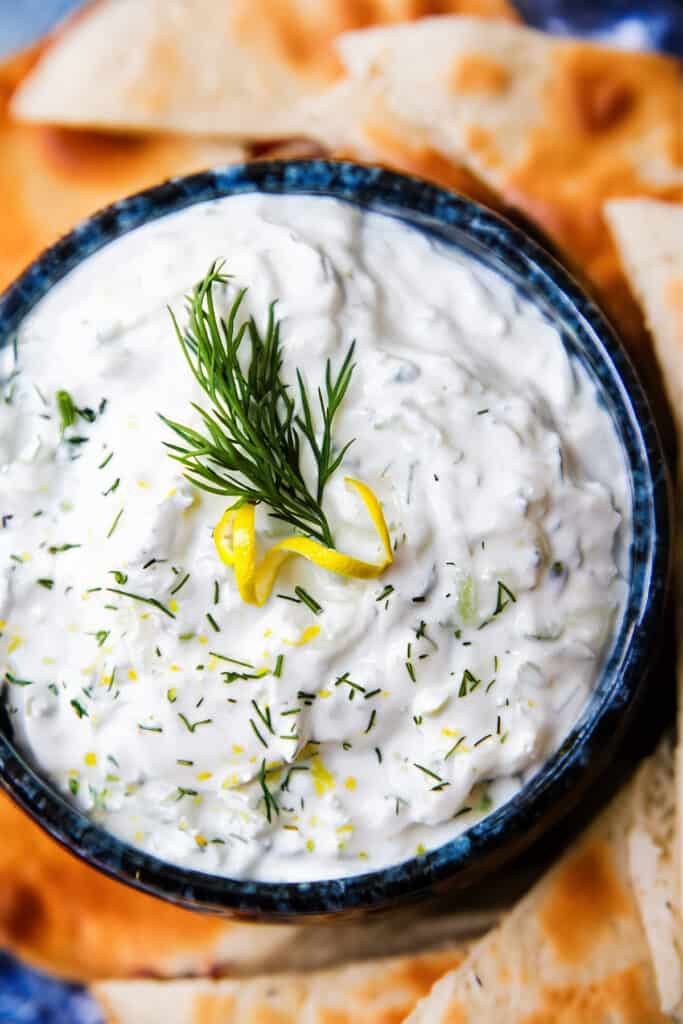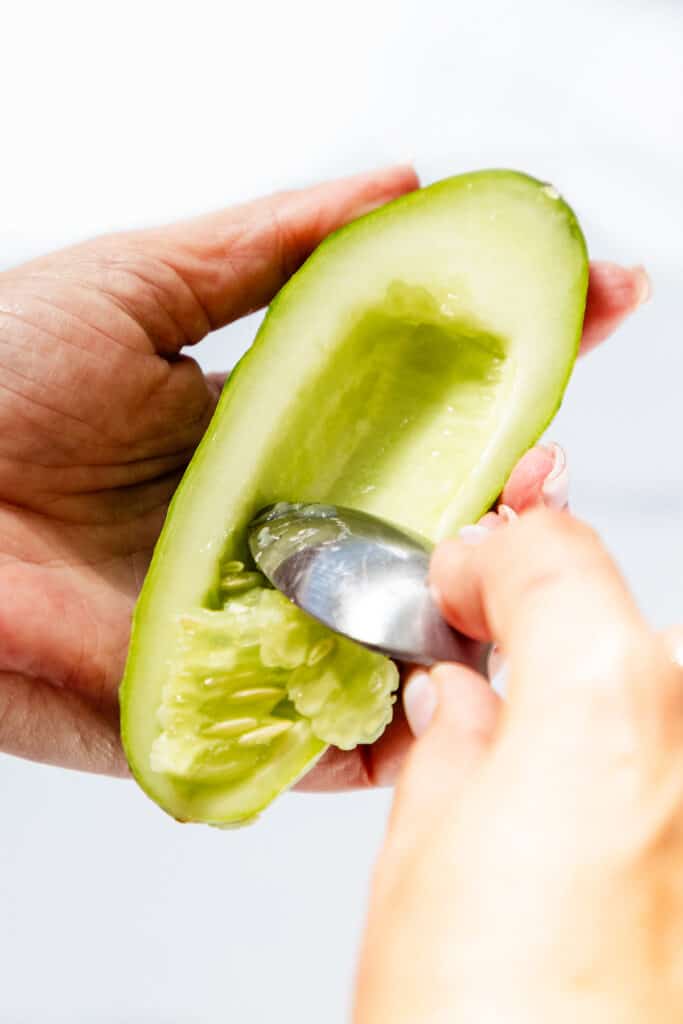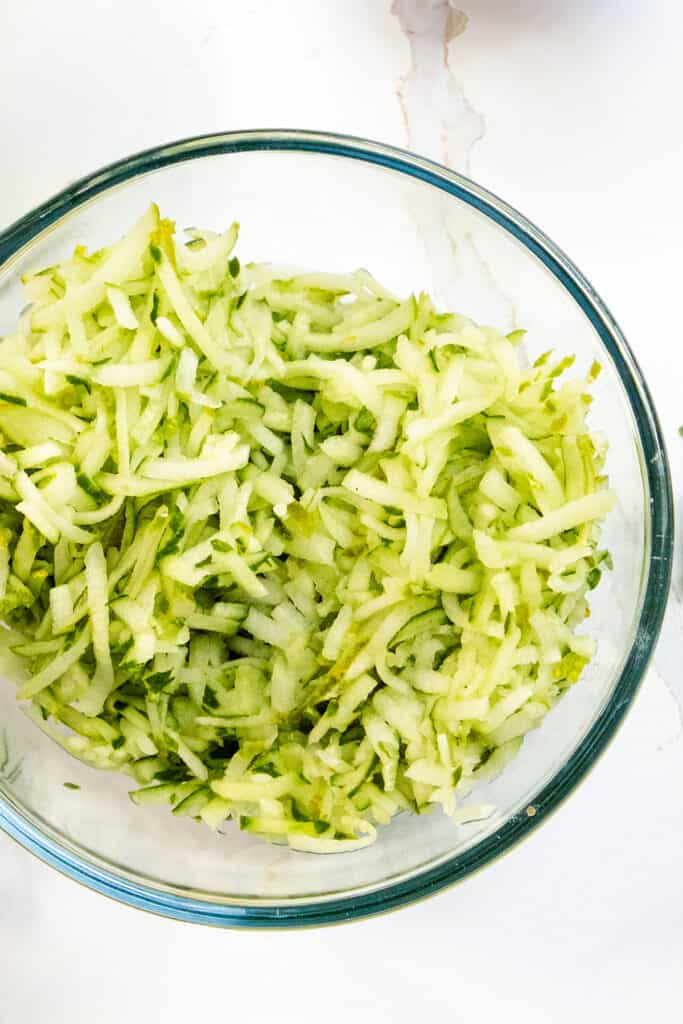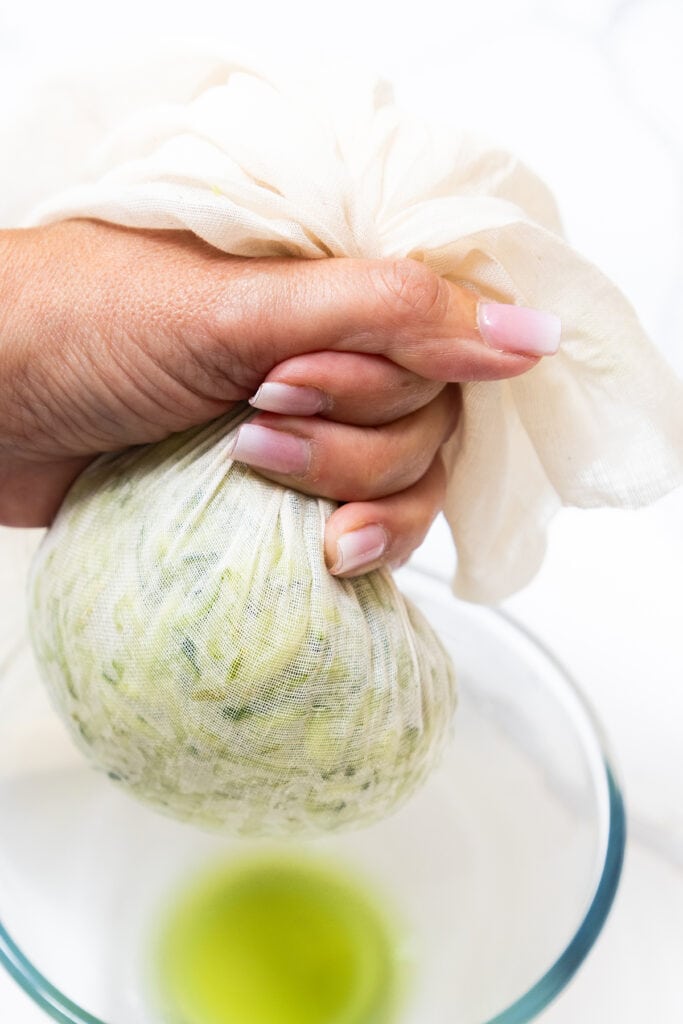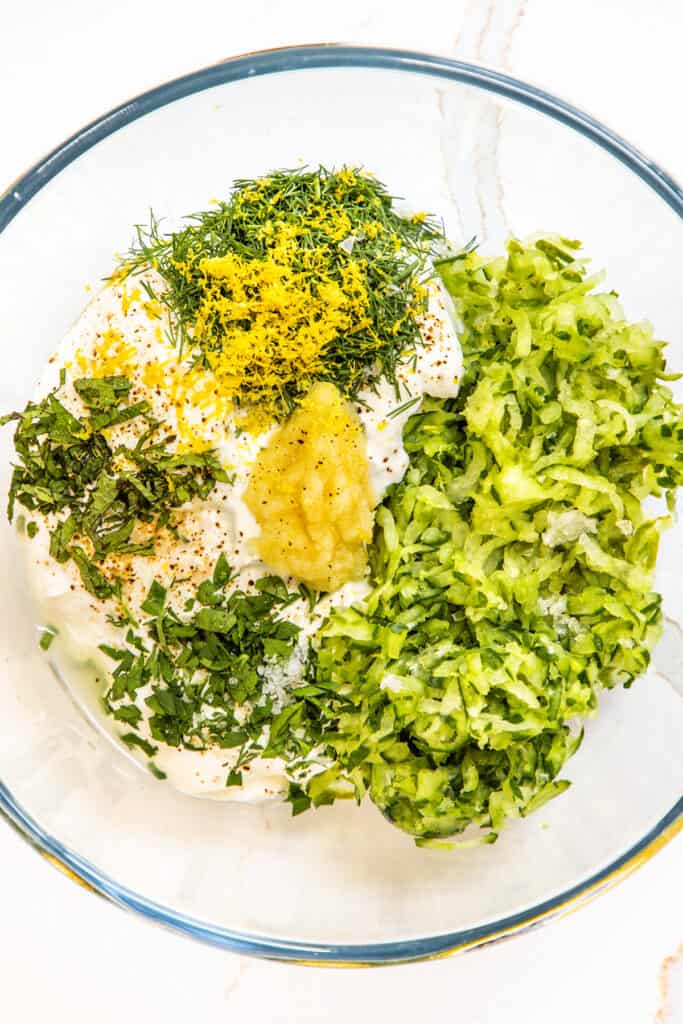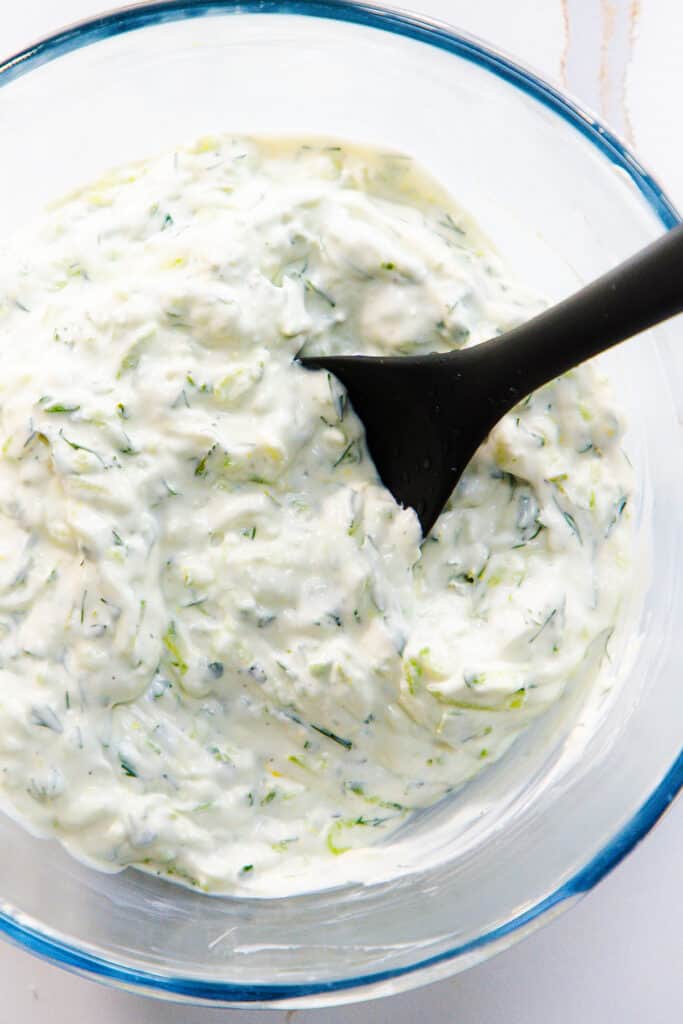Out of all the wonderful Greek recipes featured here, from our Greek-inspired Couscous Salad to the comforting Greek Meat Sauce or Moussaka, one that stands out as my frequent favorite is Tzatziki. And if you haven’t had the pleasure of experiencing this creamy Greek yogurt dip, get ready for a delightful treat like no other!
Step By Step Instructions
Preparing The Cucumber
If the cucumber skin is thin, you can leave it on for added texture and color. However, if the skin is thicker, peel the cucumber, leaving some stripes of green for visual appeal. If the cucumber has a waxy coating, peel it to prevent any undesirable texture in the dip. Cucumber: English cucumbers are ideal due to their mild flavor and thin skin. Regular cucumbers work well too, but peel them if the skin is thick. You can find both types in the produce section. Sour Cream: The addition of sour cream is optional as it diverges from the traditional ingredients. If you prefer a closer-to-tradition approach, you can omit the sour cream and replace it with extra Greek yogurt. However, including sour cream brings a luxurious richness and tanginess to the tzatziki, contributing a delightful layer of flavor. The choice is yours, depending on your desired taste and texture. Choose regular or light sour cream based on your preference. The dairy aisle is where you’ll locate sour cream. Olive Oil: Extra virgin olive oil adds the best flavor. Look for it in the oil aisle. Lemon Juice: Freshly squeezed lemon juice is preferable. Bottled lemon juice is a substitute if needed. Lemons can be found in the produce section. Garlic: Use fresh garlic cloves for optimal taste. I promise it’s worth the extra work. Fresh Herbs (Mint, Parsley, Dill): Fresh herbs provide the best aroma and flavor. If unavailable, dried herbs can be used, but In my opinion, if fresh herbs weren’t available, I wouldn’t make the dish until they were. Salt & Pepper: Regular table salt is suitable. Ground black pepper adds a good kick. To ensure the tzatziki isn’t too watery, remove the cucumber seeds using a spoon. Then shred the cucumber using a grater or food processor. You’ll need about 2 cups/250 grams for a thick dip or 1 cup/125g for tzatziki sauce. To prevent the tzatziki from becoming watery, take the shredded cucumber and sprinkle about 1/2 teaspoon of salt over the cucumber. Gently stir the cucumber to distribute the salt. Leave it to sit for around 10 minutes while you prepare the rest of the ingredients. After 10 minutes, wrap the cucumber in the towel and squeeze it firmly to remove as much water as possible. This step ensures the tzatziki maintains a desirable consistency and prevents it from being too watery. You’ll be amazed at how much liquid is released.
Making The Tzatziki
Add the shredded cucumber to a mixing bowl with 2 cups/480g of Greek yogurt, 1/4 cup/60g of sour cream, 1 tablespoon/15ml of extra virgin olive oil, 1 1/2 teaspoons of freshly squeezed lemon juice, 1 teaspoon/5g of lemon zest, 1 to 2 grated garlic cloves, 3 chopped mint leaves, 1 tablespoon/3g of flat-leaf parsley, and 2 tablespoons/6 grams of fresh dill. Then season with salt and pepper. Thoroughly mix all the ingredients in the bowl. Cover the bowl with plastic wrap and refrigerate the tzatziki for at least 1 hour. This chilling period allows the flavors to meld together. After chilling, your homemade tzatziki is ready to be enjoyed as a dip with pita bread and veggies or as a condiment for various dishes. Freezing: Freeze tzatziki, noting texture changes upon thawing due to yogurt separation. Freeze in a freezer-safe container with space for expansion; seal, label, and date. Thawing: Gradually thaw tzatziki in the fridge. Avoid microwaving to preserve texture. After thawing, stir to recombine; flavors remain delightful, if texture less creamy than fresh. Erren’s Kitchen is written and produced for informational intentions only. We are not certified nutritionists, and the nutritional information found on this site has not been assessed or authorized by a nutritionist or the FDA. The nutritional information found in our recipes is offered as an estimate and should not be considered a guarantee or fact. The estimated data is provided as a courtesy and calculated through a third-party online nutritional calculator, spoonacular API. Although we do our best to provide accurate nutritional information, these figures should be considered rough estimates. Many factors, such as brands or products purchased and the nutritional fluctuations that naturally occur in fresh produce, can alter the effectiveness of the nutritional information in any recipe. Furthermore, various online calculators provide different results depending on their particular algorithms and nutrition fact sources. To obtain the most precise nutritional information in a provided recipe, you should calculate the nutritional information with the exact ingredients you are using when preparing the recipe using your preferred nutrition calculator.

